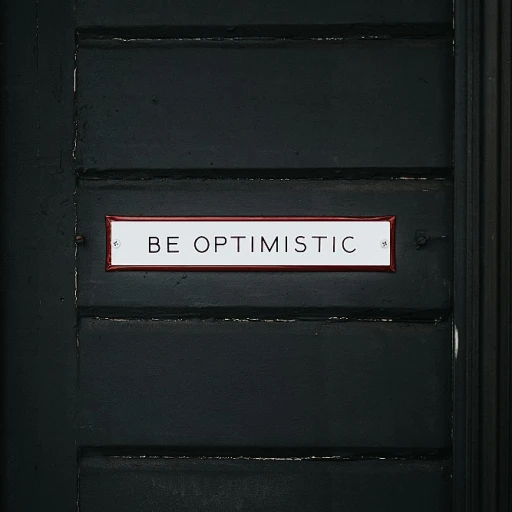
Understanding the Recruiter's Perspective
Getting into the Recruiter's Mindset
Understanding a recruiter's perspective can drastically improve your cold emailing strategy. When crafting cold emails, it's vital to consider the recruiter as a busy professional who receives numerous messages daily. The task of skimming through resumes, reading emails, and setting up interviews can be daunting. Therefore, an email that stands out due to its empathetic view of their role and its challenges is more likely to catch attention. Recruiters are not just looking to fill a position; they are searching for the best fit for their company, both skill-wise and culturally. This means your email should not only highlight your qualifications but also show that you have done your homework regarding the company and the job opportunities they offer. Effective communication begins with an understanding of the recruiter's values and goals, aligning your objectives with theirs. Also, keep in mind that time is a critical factor for recruiters. They appreciate concise and clear emails that respect their schedules. Therefore, before you send a cold email, consider the timing and content thoughtfully. A well-timed follow-up can significantly enhance your chances of catching a recruiter's attention. Finally, remember the power of follow-up emails. Sometimes, recruiters may miss your initial email, and a polite follow-up can bring back your resume to their attention, potentially opening the doors to internships or job opportunities. Consider exploring opportunities with PVaz Jobs to align better with recruiters' expectations.Researching Your Target Recruiter
Diving Deep into the Recruiter's World
When it comes to reaching out to recruiters, understanding their perspective is crucial. Recruiters often juggle numerous tasks, such as sifting through countless job applications and conducting interviews for various positions, from customer service roles to internship opportunities in computer science. This means they may not always have ample time to spend on every email they receive. Thus, it's essential to make your cold emails stand out from the rest. To begin with, research is key. Before hitting send on any cold email, take the time to research your target recruiter thoroughly. Start by visiting their LinkedIn profile to understand their professional background. This will enable you to tailor your message to their interests or experiences more effectively. Take note of the company they work for, which can give you insights into the type of candidates they typically seek, and even the opportunities they might be able to offer. Additionally, understanding the working environment of the company can provide valuable context. For instance, exploring career opportunities at Hollywood Casino can reveal the specific roles they are looking to fill and the skills they value. Being informed about these details ensures that your cold email is relevant and shows genuine interest in the company. Another handy tip is to find out the recruiter’s work email address, which is often more appropriate for job-related inquiries than personal email addresses. Carefully crafting your cold email with this information in mind can vastly increase the chances of your message being read and responded to. Keep in mind that recruiters are looking for professional, well-thought-out candidates. This means that showing initiative in understanding their role and the company's culture can significantly impact their perception of you. By doing your homework, you demonstrate diligence and clarity in your communication, which can set you apart in a crowded inbox of cold emails.Crafting a Compelling Subject Line
Key Elements for an Attractive Subject Line
Creating a compelling subject line is essential when sending cold emails to recruiters seeking job opportunities in customer service. The subject line is the first impression you'll make, and it can significantly impact whether your email gets opened or not.- Simple and Direct: Keep your subject line clear and to the point. Avoid overly complicated phrases as they can confuse the recruiter and decrease the likelihood of your email being opened.
- Include Relevant Keywords: Utilize keywords related to the position you're applying for. For instance, terms like "customer service," "software engineer," or "internship opportunities" can catch the recruiter's attention.
- Personalization: Personalize the subject line by mentioning the company or their name if you have it. Doing this shows that you've done your homework and are genuinely interested in the specific opportunity.
- Create a Sense of Urgency: If applicable, adding a sense of urgency — such as "Seeking Opportunities for Immediate Start" — can prompt quicker responses. However, be careful not to over-promise what you can't deliver.
Structuring Your Email for Maximum Impact
Maximizing Impact Through Strategic Structure
Crafting an effective cold email to a recruiter is more than just jotting down a quick message; the structure plays a pivotal role in capturing interest and paving the way for open communication. Start by strategically organizing your content for maximum impact. Begin by addressing the recruiter professionally. Use their full name and confirm their email address through their LinkedIn profile or the company website, as it adds a personal touch and shows your attention to detail. Follow with a clear and concise introduction that states your purpose promptly. Mentioning your current role or studies, such as an internship in computer science or as a software engineer, establishes your professional context upfront. Specify the job or internship opportunities you are interested in, aligning your skills and experiences with the company's needs, which demonstrates that you have done your homework. The body of your email should highlight your qualifications and experiences, tying them back to the role. Utilize bullet points for clarity if listing specific achievements or skills. Referencing your resume can provide additional insights into your capabilities. Remind the recruiter concisely of your potential value to their team. Incorporate a call to action that encourages the recruiter to consider your job application or to discuss potential opportunities. Be clear about your intentions, such as seeking an interview or a follow-up email to delve deeper into how you can contribute to their team. Close your email professionally and courteously, offering your LinkedIn profile as an additional reference to your professional history. Thank the recruiter for their time, and make your closing statement inviting and open-ended, encouraging further conversation.Personalization and Customization Tips
Making Your Email Stand Out
When it comes to cold emailing recruiters, personalization is key. Recruiters receive numerous emails daily, so making yours stand out is crucial. Start by addressing the recruiter by their name, which you can often find on their LinkedIn profile. This small touch shows that you’ve taken the time to research and are genuinely interested in the job opportunities they offer.
Tailor Your Message
Generic emails are easy to spot and often end up being ignored. Customize your email by mentioning specific details about the company or the role you’re interested in. For instance, if you’re applying for a customer service position, highlight your relevant experience and how it aligns with the company’s values or goals. This demonstrates your enthusiasm and understanding of the company’s needs.
Highlight Relevant Experience
Incorporate your professional background in a way that aligns with the job application. If you’re a software engineer or have a background in computer science, mention any projects or experiences that showcase your skills. This not only adds credibility but also piques the recruiter’s interest in your resume.
Use a Professional Tone
While personalization is important, maintaining a professional tone is equally crucial. Avoid overly casual language and ensure your email is free of grammatical errors. A well-written email reflects your professionalism and attention to detail, qualities that recruiters look for in potential candidates.
Include a Call to Action
End your email with a clear call to action. Whether it’s asking for an interview, requesting more information about internship opportunities, or expressing your interest in future job opportunities, make sure your intentions are clear. This not only guides the recruiter on how to respond but also shows your proactive approach.
Leverage Email Templates Wisely
While email templates can save time, ensure that you customize each email to fit the specific recruiter and company. Templates should serve as a foundation, not a one-size-fits-all solution. Personal touches and relevant information will make your email more engaging and increase the likelihood of a positive response.
Follow-Up Strategies
Building a Follow-Up Strategy that Stands Out
Creating an effective follow-up strategy is crucial when cold emailing recruiters, especially if you're aiming for opportunities in customer service or fields like computer science and software engineering. After sending that initial cold email, it's beneficial to maintain momentum and keep your name fresh in a recruiter's mind without appearing overly persistent. Firstly, allow a reasonable time frame before your first follow-up. Waiting about a week is generally recommended. Make sure this follow-up email is polite and to the point, expressing continued interest in the job or internship opportunity. Highlight the specific role and reference any previous communication, which will help the recruiter recall your initial email. To further increase the chances of your follow-up standing out:- Incorporate Personalization: Reference any mutual connections, shared experiences, or unique skills you bring to the table that align with the company's needs.
- Utilize an Email Template: While personalization is key, starting with a professionally crafted email template can ensure you cover all essential points and maintain a professional tone.
- Demonstrate Value: Reinforce how your application fulfills the company's goals and addresses its challenges.












